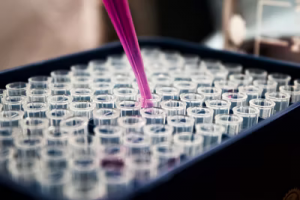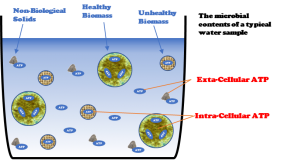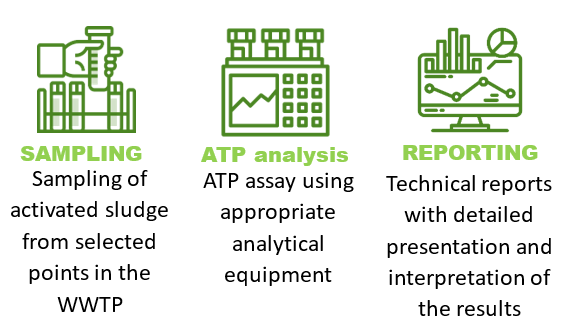
Most undesirable situations in a wastewater treatment plant (WWTP), e.g., sludge bulking, toxic effects, high operating costs, poor performance, etc. can be prevented in time, by determining the exact quantity and quality of biomass in the biological reactors. The usual practice of estimating biomass concentration through the determination of suspended solids in mixed liquor samples (MLSS) is considered inadequate, because this parameter also includes dead microorganisms and inert solids and, at the same time, does not provide any information on the quality of the living biomass. This limitation may lead to delayed or, even, no diagnosis concerning the biological treatment process, with a subsequent risk of disturbing the performance of a WWTP.




